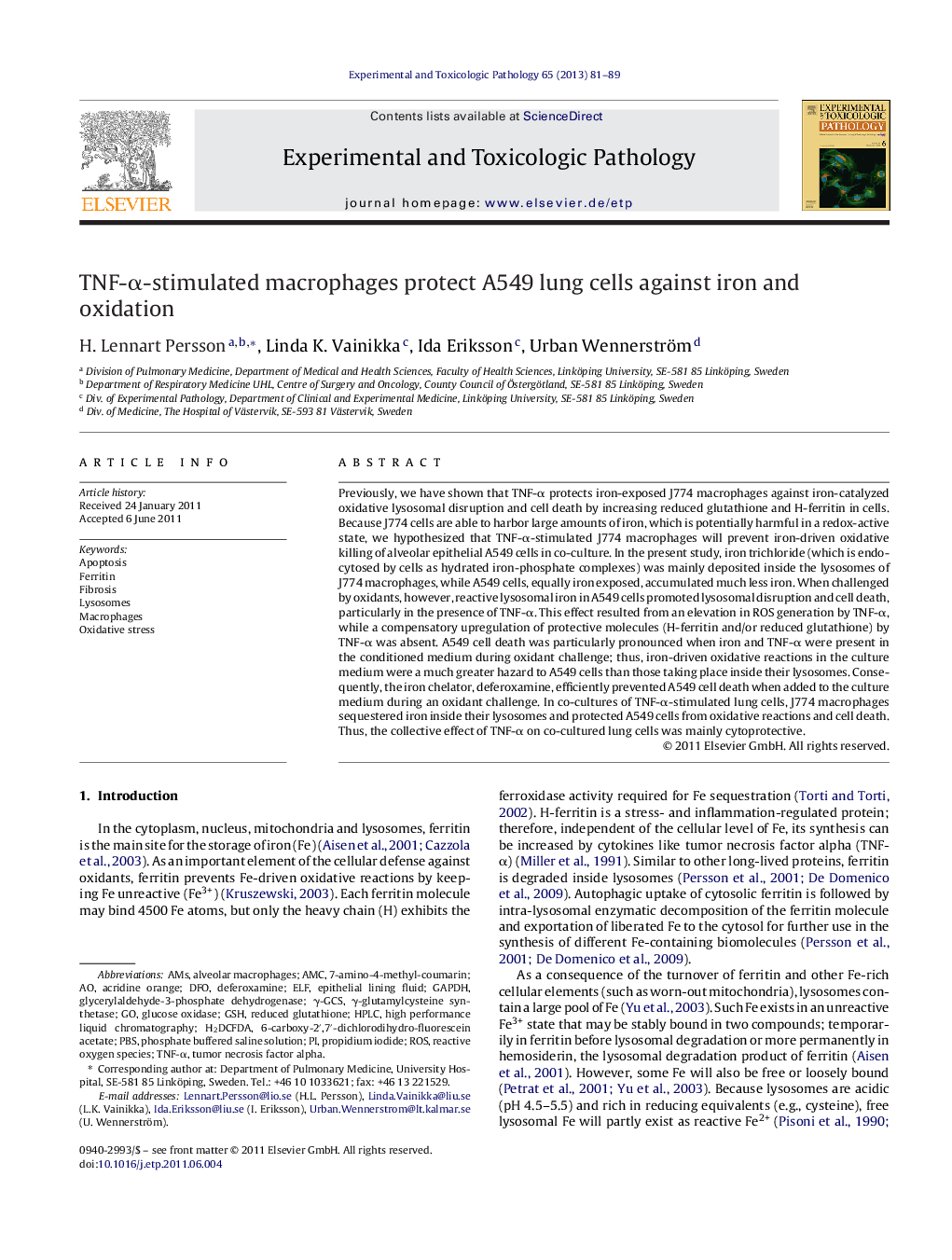| Article ID | Journal | Published Year | Pages | File Type |
|---|---|---|---|---|
| 2498900 | Experimental and Toxicologic Pathology | 2013 | 9 Pages |
Previously, we have shown that TNF-α protects iron-exposed J774 macrophages against iron-catalyzed oxidative lysosomal disruption and cell death by increasing reduced glutathione and H-ferritin in cells. Because J774 cells are able to harbor large amounts of iron, which is potentially harmful in a redox-active state, we hypothesized that TNF-α-stimulated J774 macrophages will prevent iron-driven oxidative killing of alveolar epithelial A549 cells in co-culture. In the present study, iron trichloride (which is endocytosed by cells as hydrated iron-phosphate complexes) was mainly deposited inside the lysosomes of J774 macrophages, while A549 cells, equally iron exposed, accumulated much less iron. When challenged by oxidants, however, reactive lysosomal iron in A549 cells promoted lysosomal disruption and cell death, particularly in the presence of TNF-α. This effect resulted from an elevation in ROS generation by TNF-α, while a compensatory upregulation of protective molecules (H-ferritin and/or reduced glutathione) by TNF-α was absent. A549 cell death was particularly pronounced when iron and TNF-α were present in the conditioned medium during oxidant challenge; thus, iron-driven oxidative reactions in the culture medium were a much greater hazard to A549 cells than those taking place inside their lysosomes. Consequently, the iron chelator, deferoxamine, efficiently prevented A549 cell death when added to the culture medium during an oxidant challenge. In co-cultures of TNF-α-stimulated lung cells, J774 macrophages sequestered iron inside their lysosomes and protected A549 cells from oxidative reactions and cell death. Thus, the collective effect of TNF-α on co-cultured lung cells was mainly cytoprotective.
